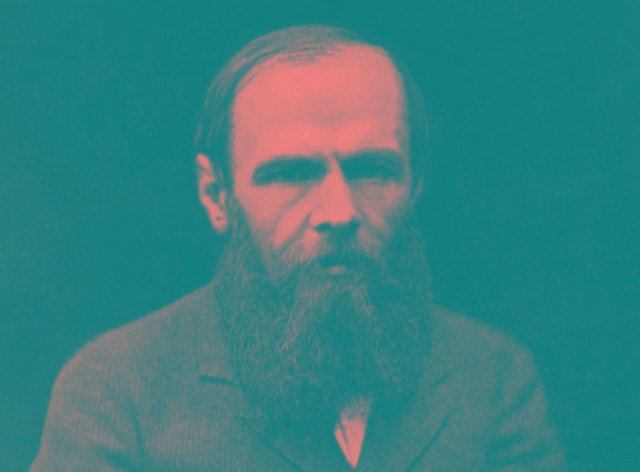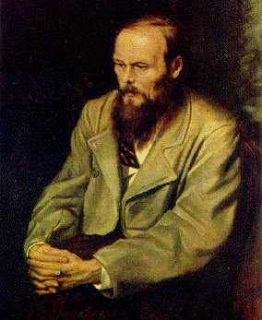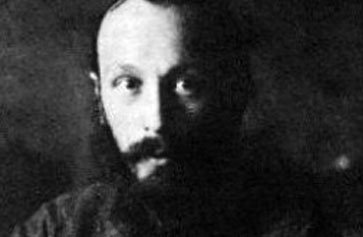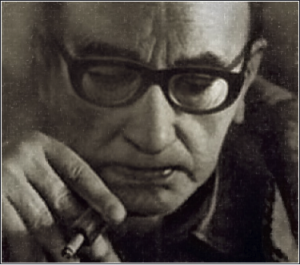Bakhtin and Dostoyevski Confronted
It is no wonder that Dostoyevski’s Crime and Punishment has created so much impact and debate ever since it was written; because apart from its general subject which paves the way to classical discussions such as the ones regarding justice or criminal mindset, the book is just like a mystery box that never ends bringing out possibilities for new aesthetic interpretations and literary criticism. In other words, the book is quite resourceful in the sense that it has the richness to enable different readers to come up with diverse interpretations and evaluations of the book due to its inherent fertility. It is possible to put this idea in Bakhtin’s discourse and say that the aesthetic product is co-authored by the readers, and since every reader has his/her own unique point of view, the wholes that are achieved through the consummation of the product may be distinct (Bakhtin, 1990, pp. xxvii-xxx).
To open up the issue a little bit more, a closer look up at the book in general is necessary. It can be fruitful to start with an in-dept analysis of a detail that is mostly ignored by many of the literary readers: the title. The book is titled “Crime and Punishment” and it is about a murderer. Only regarding this fact, it is possible to see how Dostoyevski plays with his readers. The simplicity of the title gives the sense that the murderer kills people (crime) and after this he suffers and becomes convicted (punishment). It could be seen as if the title is the naivest and shortest summary of the book. In fact, not at all. The simplicity in the title is, I believe, an irony that Dostoyevski intends because a considerable part of the book is, in my interpretation, dedicated to debunk our preconceptions about what “crime” and its possible “punishment” is. That is, it is about revealing that neither crime nor punishment is realities whose nature is distinct with its clear boundaries. Therefore, our beliefs about justice are put under big questions. The book problematizes what could be considered crime and punishment, because Raskolnikov never accepts any feeling of guilt due to his alleged criminal activity and all the sufferings he goes under which could be considered as that his punishment actually never corresponds to the crime he commits. Therefore, there is neither a crime whose nature is constructed clearly, nor a punishment that directly corresponds to the crime it is intended against. Another evidence for this kind of interpretation is the discussions in the book regarding who could be considered as a criminal and who are the ones that are not applicable for this category. Basically, Raskolnikov’s published paper about this issue makes the subject even more complicated and moves the concepts of crime and punishment far from exactness and determinacy. Therefore, what seems to be the summary of the book, the crime of a murderer and his punishment, that is, the title, is actually nothing other than an irony adorned with Dostoyevski’s incredible writing skills. The title is simple and clear; and the whole book is about destroying that simplicity and blurring the clarity.
By keeping these in mind, it gets easy to put this analysis into Bakhtin’s context. It is essential to notice that by looking through the eyes of Raskolnikov and sympathizing, the reader is commited to think if what Raskolnikov did could be considered as a crime or not, although in readers’ life, killing a human being is most probably considered as a crime so obviously. The reader is compelled to think if the justifications made by Raskolnikov are convincing enough to accept that in some cases, murder may not be deemed as a crime. And despite all these, Raskolnikov goes under an immense psychological suffering which forces the reader to ask: “if this is a punishment, is it still the punishment of the alleged crime he commited, or is it a suffering that could be traced back to no concrete and tangible cause?” There are two issues here to be explored: one is regarding the creation of symphaty between the reader and the hero, and the second is about the creation of aesthetic product. First, while promoting the questions mentioned above, Dostoyevski draws Raskolnikov’s inner life and creates a ground for a sympathetic understanding between the reader and Raskolnikov. Bakhtin defines sympathetic understanding as “the self-activity of mine in relation to another’s inner world (from outside this world)” (Bakhtin, 1990, p. 102). Therefore, more and more possibilities for alternative readings and interpretations are opened up because Bakhtin emphasizes that sympathetic understanding is not having the identical experience with the hero but that it is “a transposition of another’s experience into an entirely different axiological plane, into an entirely new category of valuation and forming” (Bakhtin, 1990, p. 102). Therefore, the events are co-authored by the unique standpoint of the reader and it leads the work to flourish. The confrontation of different realms (that of the hero and the reader) reciprocally contribute to each other’s richness due to the excess in their sights. Bakhtin (1990) says:
Just like the spatial form of a human being’s outward existence, the aesthetically valid temporal form of his inner life develops from the excess . . . which contains within itself all moments that enter into the transgredient consummation of the whole of another’s inner life (p. 103).
Thus, the creation of a whole is not something that brings a final interpretation to the work. Rather, the emphasis that the whole totally depends on the particular existence of the one who deals with it should be highlighed. On the one hand, the meaning of the book is determined in a definite way by the consummation of the product and the creation of the whole, and on the other hand through this process the work shows up its nature which cannot be unequivocal.
Second, throughout “Author and Hero in Aesthetic Activity”, Bakhtin states over and over that for the creation of the aesthetic product, there should be a transgredient point to look at the product. In other words, consummation of the aesthetic object can be only through the creation of an outside point of view. For this, the reader first sympathizes with the hero and only after this, when he/she turns back to his/her life and sees everything from outside, one is able to appreciate the aesthetic nature of the work (Bakhtin, 1990, p. 26). Dostoyevski creates a dialectic between the inner world and outer world by showing an essential conflict between those two realms. He shows that when we suffer along with Raskolnikov, things start to seem blurred and one’s power to blame Raskolnikov for what he did diminishes. However, when we get back to ourselves and imagine ourselves killing somebody in our real lives, we get shocked by how impossible it seems to easily kill somebody and not feel any guilt for this. Thus the aesthetic value here is created through the dialectical relationship between possible and impossible (killing somebody), blurred and clear (concepts of crime and punishment), innocence and guilt (Raskolnikov’s standpoint and the readers’ standpoint in his/her real life regarding evaluation of the deeds of Raskolnikov).
Hence, Dostoyevski creates an astounding dynamic relationship between the actual happenings which are traced by seeking “real evidences” (whose investigation is done by policeman) and the happenings in Raskolnikov’s psychology which are continuously evaluated by Raskolnikov himself. Therefore, the idea of justice (or the correspondance between crime and punishment) exists in two different realms that are completely in opposition with each other.
This also leads the reader to question what could be considered as an evidence to a crime and how can justice follow it when these two realms seem equal in terms of providing convincing evidences of a crime. Thus, the nature of justice, as something that could possibly exist in two different realms, is distorted. How can there be two different kinds of justice system, which one is to me “more just”? Therefore, it is not all the time that the realm of Raskolnikov’s psychology is favored over the world outside him. Dostoyevski calls the readers to contemplate the events in “objective” terms, although this idea is given through Raskolnikov’s own words. Thus, it is quite frequent in the book that the outside world has a dynamic relationship with Raskolnikov’s immanent world. In other words, although Raskolnikov’s frame of seeing things is on the front stage most of the time, interestingly, his words enable the possibility for the creation of an outer world. This may be mainly because the horror of killing a human being, on the part of the reader, and its mostly obvious unethical character naturally creates the space and distance which is needed by the aesthetic creation. It is due to the character of the striking subject of the book, homicide, that this outside world is created by the reader instantly even if the writer does not seemingly provoke its emergence. And it would be to underestimate the brillance of Dostoyevski to say that he did not foresee this.
Although this analysis is a Bakhtinean reading of Crime and Punishment, it can only be thought as an alternative one since Bakhtin does not agree that Dostoyevski provides the necessary distance between the hero and the outside point of view which is essential for the creation of the aesthetic work. He categorizes Dostoyevski under the writers who take their heros under their possession (Bakhtin, 1990, pp. 17-20). He says this kind of writers do not look from somewhere outside the eyes of their heros and there is no background that is provided outside of the inner world of the hero, thus there is no world that remains uneffected from the changes in the inner world of the hero. This leads the writer to fail to provide the wholeness which is essential for aesthetic creation. In fact, it is untenable to say that Dostoyevski does not vastly emphatize with Raskolnikov when one knows about Dostoyevski’s own life. It is widely known that Dostoyevski was convicted to death penalty after he was caught up with a group of people dealing with assassination activities and got arrested. In Crime and Punishment, the mindset of a criminal who is sentenced to death penalty is so frequently delineated through the experiences of Raskolnikov that it becomes possible to claim without hesitation that Dostoyevski makes references to his own life.
Dostoyevski’s death penalty was canceled and it was told to him only minutes before the execution. At some points where the book nearly becomes autobiographical, it becomes possible to acknowledge that Bakhtin might be right to some extent and that Dostoyevski closes all the distance between him and his hero where he poses no other, outside background and only looks through the eyes of Raskolnikov. It is significant to stress that this evaluation does not in any way intend to say that Dostoyevski connects his personality entirely with Raskolnikov. Bakhtin makes it very clear that juxtaposing the author and his/her hero by making excepts from the text and pointing out the similarities between the author’s life and the hero’s experiences through this way is misleading (Bakhtin, 1990, p. 9). It is mainly because it ignores the fact that they belong to different planes and that they are wholes, so picking up some of the similarities between the parts says nothing about the wholes. The purpose here is not to claim that Dostoyevski entirely identifies himself with Raskolnikov; rather, the emphasis is on the fact that there are some cases where Dostoyevski comes so close to his hero and at those moments, there is left no space for the hero to become an aesthetic product.
However, at this point, it might be productive to ask to what extent Bakhtin’s anchoring could be generalized. That is, we should ask: is this situation really the case throughout the book? Another question that is if greatest importance is: does Bakhtin really read Dostoyevski in Dostoyevski’s own terms, or are there some situations where Bakhtin might be imposing his own categories and distinctions over Dostoyevski’s work, despite the fact that the work has a nature to transgress those categories? We have two works to evaluate together for the purposes of this essay: Bakhtin’s “Author and Hero in the Aesthetic Activity” and Dostoyevski’s Crime and Punishment. So far, we have read Dostoyevski with respect to Bakhtin’s ideas. Now, it can be quite interesting to look at Bakhtin’s ideas from the perspective of Dostoyevski. In this way, it becomes possible to avoid a one-sided evaluation between the two works and thus we can compare them in a thorough way.
One of the impressive characteristics of Crime and Punishment and what makes it so successful is Dostoyevski’s skills to describe the Raskolnikov’s psychology in such an immense detail and richness. However, the book is not composed of the delineation of Raskolnikov’s experiences after the events that take place on the other side. That is, it is not the case that first events happen, and after that his psychology is described, and then events happen again, and Raskolnikov’s state of mind is followed after again. Rather, the events seem to be determined according to Raskolnikov’s consciousness. In other words, the events are take shape according to the interestedness and valuation of Raskolnikov. To give an example, as Raskolnikov goes to kill the woman, an axe suddenly pops up on his way. How the axe came there, how it happened to come to the way of Raskolnikov so surprisingly, Dostoyevski gives no details. The emergence of the axe and everything as concerns such a vital detail is entirely determined by Raskolnikov’s equipmentality. This may be connected with what Bakhtin calls the horizon and environment of the hero. He says, “all of the objects are correlated with the hero’s exterior, with his boundaries- his outer as well as inner boundaries. . . [but] it should be evident that this purely plastic and pictorial principle of ordering and giving form to the external world of objects is completely transgredient to the hero’s living consciousness. . .” (Bakhtin, 1990, p. 99). In the event of axe, we see that the objects are indeed correlated with hero’s boundaries (internally as his horizon and externally as his environment), but it is not transposed in a transgredient point. What Bakhtin calls background is totally absent, as he criticizes. Therefore, Bakhtin would shape Raskolnikov as an absolute consciousness which has nothing transcendent to itself and thus would claim that such a consciousness would be unable to be “aestheticized” (Bakhtin, 1990, p. 22).
But although there is no background put behind Raskolnikov, is it really possible to place Raskolnikov’s consciousness as an absolute one? At this point, it is important to make Bakhtin’s way of thinking a little more explicit. Although Heideggerian effects on Bakhtin are felt at his analyses and he does not mean the traditional concept of consciousness, which is “the spectator”, there is a clear distinction Bakhtin makes between inside and outside which are put in opposition to each other throughout his essay. There is the hero’s inner world and outer world, and then there is inside and outside of the text to be evaluated aesthetically. The two realms are distinct and the tenets of Bakhtin’s discourse lean on this distinction. For instance, the possibility of aesthetic creation is possible only through marking a point outside the whole (1990, p. 22); the distinction between soul and self-consciousness relies on the idea that self-consciousness holds a definite internality; his concepts of “empathy” and “sympathy” as well as “rhytym” depend on this binary opposition. But my claim here will be that this clear distinction between inside and outside may not be applicable to Dostoyevski’s plane of writing, as my interpretation of Crime and Punishment necessitates the work at many points to transgress such an opposition. In other words, Bakhtin may apply his aesthetic discourse to the works that does not necessarily distort the distinction between inside and outside, but as a co-author of the book, that is, as a reader, I would say Raskolnikov’s case would transgress such a distinction and makes their boundaries problematical. Thus, if we look at the issue in Dostoyevski’s own terms, Bakhtin’s analysis could be put to a certain position by revealing to what extent it is capable of diving into Dostoyevski’s work.
I will go on by claiming that despite it conflicts with its absolute character, Raskolnikov’s consciousness is a fragmented absolute. The term “fragmented absolute” is self-contradictory and it may seem meaningless, but only such a contemplation and deconstructive move can show the fact that inside/outside opposition is rendered problematical in Crime and Punishment, because the idea of “absolute” is possible only through the construction of inside/outside opposition.
It is undeniable that the book is written through the transpositions and valuations of Raskolnikov’s state of mind, but it is hard to say that his states of mind constitutes a unity within themselves so as to create an internality. Maintaining that there is no outside of the hero’s horizon and putting it as a sufficient evidence to say that there is no external point of reference to keep a distance from the hero would be a misleading account, because not only the form but also the content is significant in determining the relation between inside and outside realms in Dostoyevski’s novel. And the content of Raskolnikov’s psychology has a transgressive character concerning the constructions of inside and outside realms. It is because even Raskolnikov is most of the time outside himself due to his diseased state of mind. Dostoyevski remains it unclear which thoughts and experiences of him are due to his disease, which ones of them are due to his character. In the times Raskolnikov is being self-critical, sometimes Dostoyevski plays with his reader and remains it indeterminate if those criticisms of Raskolnikov’s deems are still made through looking the eyes of Raskolnikov, or Dostoyevski’s, or the readers’s, or an “objective” ground. From which point onwards the delineations of his psychology belong to Raskolnikov; and where they end; and where the objective (or that of the writer or reader) descriptions begin is often left indefinite. This is not because the work is not mature enough to come up with a clear distinction between inside and outside realms. Rather, I believe this to be an intended transgression of those realms and Dostoyevski tries to confuse the reader about when the psychology of Raskolnikov ends and the reader’s sympathy begins.
There are moments in the text where even the main subject of the book, homicide is regarded as something parasitic and secondary to what is delineated. For instance, in one of the times Raskolnikov’s suffering peaks, Dostoyevski writes that Raskolnikov totally forgets about the incidence of homicide despite his suffering continues very deeply (2002, p. 139). At those moments, it is indeed the case that the reader also dives so deeply in description of Raskolnikov’s suffering that he/she is also at the point of forgetting it. Thus, the events are not always transparent to the hero and also possibly to the reader. Thinking of the book in general, it makes sense to conclude that Raskolnikov’s consciousness is the least type of consciousness that could be considered as self-knowing, aware and clear. Thus, its borders are also blurred. What remains inside it and what remains transcendent to it cannot be maintained clearly.
Bakhtin holds “I am not the hero of my own life” (Bakhtin, 1990, p. 112), and when we delve into Dostoyevski’s realm, there are moments when we are not even sure if Raskolnikov is our hero, or we are his hero, or we are our own hero. Outside and inside realms frequently merge with and diverge from each other. Hence, according to this interpretation, there is a part of the book which could be considered to remain untouchable by Bakhtin’s analysis.
Regarding the play of those two realms (or two layers), sometimes Dostoyevski makes such brilliant moves that those layers multiply and the reader is left unable to tell where he/she is exactly located. One example is Raskolnikov’s dream where he sees himself in his childhood, witnessing a wild murder of a poor horse. And the scene is described in such immense detail; the movements of the horse, the brutal state of mind of people, the surrounding environment, and so on. Indeed, the events in the real life of Raskolnikov are not described in so much detail pertaining to the environment. In this dream, the details are so many in number that the reader is tended to think it is not the viewpoint of Raskolnikov and it is an objective description. However, it is impossible, since it is a dream and is already preconditioned by Raskolnikov’s vision. If we compare this situation to the scene of the murder commited by Raskolnikov, the situation is even more interesting. The scene of the murder, probably one of the most vital moments in the book, is described only regarding the equipmentality of Raskolnikov and no objective details are given. Dostoyevski does not even involve in describing how the blood flows from women’s body and the room turns into a horrible place. Thus, on the one side there is a dream which looks more real than the reality itself with the vast number of details; and on the other hand there is a brute reality which is described just like a dream. Due to the unique features of Raskolnikov’s states of mind, it is frequently the case that he is able to experience dreams like a consciousness which is totally aware of itself; and he is unable to experience the reality as a self-knowing subject who is interested in what is really going on around him. In this situation, it becomes almost useless to go on with Bakhtin’s terms “horizon” and “environment” because the characteristics of inner and outer worlds are completely switched according to this example.
Lastly, another interpretation regarding the nature of Crime and Punishment should be made to reveal Dostoyevski’s genuinity and extraordinary skills in his writing once again. As told at the beginning of the essay, Dostoyevski might be playing a game in the title by making it so ironically simple. This might be translated into Bakhtin’s own terms as “co-authoring the reactions of the reader” because due to the nature of titles in general, the reader is manipulated and his/her expectations are shaped accordingly. In my view, Dostoyevski plays a similar game in all the other critical moments of the book, specifically in the scene of murder and Raskolnikov’s conviction at the end of the book. If one is reading the book as if it is a book about homicide, or as if it is a detective story, Dostoyevski makes the reader so thirsty to learn what will happen by describing the psychological side of the events at such a length that one may even want to finish the book all at once to learn what he/she is excited about. Indeed, the book is not about what happens in those critical moments at all. It is not a detective story. All the delight and the aesthetic value of the book is at those descriptions which provide the psychological account at length. I believe Dostoyevski is aware of such a tendency by a group of readers and he makes those vital moments so hollow that it maybe has no aesthetic value in it at all. He describes the murder scene quite shortly, almost in an uncaring manner. If the reader reads the psychological account fast to learn what will happen at that “vital” moment of murder, he/she probably is quite disappointed when he/she arrives at there. I believe through doing this, Dostoyevski tries to show the book is not about that. The same is the case at the end of the book. The reader gets more and more excited about learning what will happen at the end of the book. At the end (p. 625), Dostoyevski (2002) starts quite soulless: “Sibirya”. This one word is all-explanatory: Raskolnikov is convicted. If all of the reader’s intentions are directed towards this factual information which casts a shadow upon the importance of psychological analysis, he/she learns what happened only by one word. No delight, no soul, no aesthetic value; just a neutral, lifeless explanation. Then he continues to explain the factual details of Raskolnikov’s conviction such as the process of the court. It is as if he is saying ironically: “Only the factual side was that what you’ve wanted? Well, here it is. Enjoy!” And the reader who reads the book as if it is a detective story is disappointed again.
This analysis shows that Dostoyevski actually manipulates the reader in more than one way, upon more than one realm. Hence, it may not always be possible to say which reaction is genuinely ours and which reaction is that of the author. The readers’ reaction to the reactions of the hero may be preconditioned by the reaction of the writer which foresees all those reactions beforehand. Again, I believe this to be a blurring of the boundaries between the realms of the author, the reader, and the hero. Thus, it would be too bold to say that in such a situation, Dostoyevski is incapable or creating a work that has an aesthetic value just because it is not possible to situate where outside begins and inside ends. Hence it may not be always necessary that there has to be a whole at the front stage which is supported by an independent background; sometimes what is parasitic and secondary may be the fundamental issue and what is to be considered a “whole” could turn into only a lifeless background.
To conclude, when Bakhtin’s experienced comments about the nature of the aesthetic product and Dostoyevski’s sensational novel Crime and Punishment are confronted, the result might be quite productive for both sides. While Dostoyevski’s novel can be read through adapting the discourse of Bakhtin, it is necessary to situate to what extent his novel can be touched and encompassed by this particular type of interpretation peculiar to Bakhtin. In order to understand Bakhtin’s position with respect to that of Dostoyevski, we should make clear what remains outside the reach of the Bakhtinian analysis of the aesthetic value of the book. Similarly, Crime and Punishment can be an ideal book to come to a deeper understanding of Bakhtin’s ideas since the relationship it provides between the author and the hero is quite an interesting one. And the result would be considered as productive by both of the sides, since it comes up with a ground that recognizes the powers of different interpretations. Neither of the contexts (of Bakhtin and Dostoyevski) could be exhausted by the other one; and not being exhaustable is mostly a characteristic of revolutionary standpoints. There is no doubt that both Dostoyevski and Bakhtin belong to those revolutionary realms.




